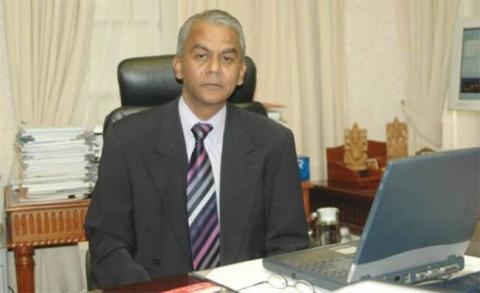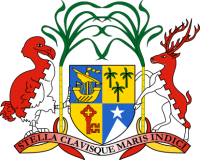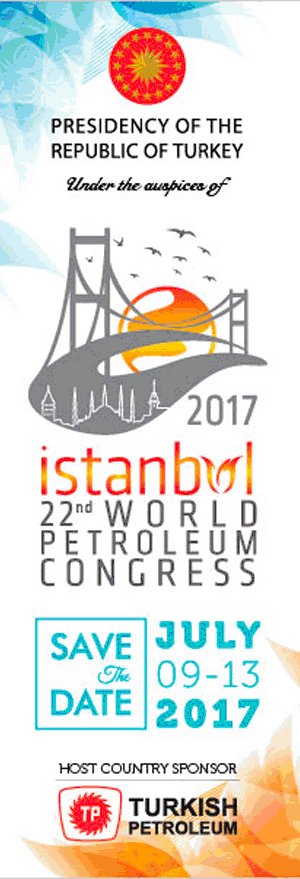Mauritius: Bank of Mauritius governor takes long-term view on reforms
2017/05/07

For the past two years, Mauritius’s central bank has fostered measures to fortify the country's banking sector, which accounts for 12% of its GDP. While reforms are paying off, challenges such as offshore business risk persist and need to be managed, as central bank governor Rameswurlall Basant Roi tells James King.
Q: The Bank of Mauritius has worked hard to improve its regulatory and supervisory systems in recent times. In what ways have these improvements benefited the country’s financial sector, inclunding the economy?
A: The prime objectives of the regulatory and supervisory reforms launched by the Bank of Mauritius are to foster financial stability and preserve the reputation of Mauritius as a safe, transparent and competitive jurisdiction. The measures aim to contain and mitigate vulnerabilities of the jurisdiction and fortify resilience of the economy. As the ongoing projects are executed, the prospects for doing business in and from Mauritius are expected to improve considerably.
Macro-prudential measures, Basel III, revamped prudential guidelines, consolidated supervision, stress tests and heightened surveillance are but a few of the recent measures executed to strengthen the regulatory regime. The systemically significant banks are strengthening capital buffers so that they will be better prepared to face potential adverse shocks.
There is an observable move by operators in the financial sector to pursue market and product diversification. With banks keeping an average capital adequacy ratio of 17% and enjoying a comfortable liquidity position, the sector is continuing to thrive on a sound footing. I need not overstate that a robust financial sector plays a key role in promoting solid and sustained increase.
Q: How would you characterise the Bank of Mauritius’s key regulatory challenges?
A: Two overriding challenges the Bank of Mauritius is currently facing are how best to address the risks and vulnerabilities associated with the offshore business sector and how best to sharpen the competitive chance of the financial sector as a whole. To address these challenges and allow the financial sector to pursue its expansion, it is imperative for the bank to take a long-term strategic view.
Over the completed two years or so, the Bank of Mauritius has launched several key projects to strengthen and consolidate the banking industry. These initiatives should from presently on help the jurisdiction to cope with unforeseen events and cushion any adverse shocks, inclunding facilitate the sustainability of monetary and financial stability.
Q: Why has Mauritius’s amended double taxation avoidance agreement [DTAA] with India not led to a fall in world business deposits in the banking system? Does the next erosion of these deposits represent a risk to banking sector stability, and if so, how can this be overcome?
A: There was some speculation that the revision of the India-Mauritius DTAA would result into a flight of capital. No such flight was observed. The subdued impact of this revision is partially attributed to the series of initiatives taken by banks to diversify their deposit base and investment exposures, and tap new opportunities since India announced the general anti-avoidance policy in 2012. Furthermore, some operators in the industry have been re-engineering their business model to position Mauritius as a strong financial platform between Asia and Africa.
The amended DTAA provides for a ‘grandfathering’ clause that maintains specific benefits to completed investments and a phased implementation of the new provisions, to give stakeholders time to adapt. Furthermore, the authorities have taken several initiatives to promote Mauritius as a transparent, collaborative and attractive international financial centre.
Recent stress tests conducted by the financial sector assessment programme mission in November 2015 and the Bank of Mauritius confirm the resilience of the banking sector should there be a sudden drawdown of world business company [GBC] deposits. GBC deposits have been relatively stable so far.
In line with the guideline on liquidity risk management, banks need to have in place prudent liquidity management policies to meet unexpected liquidity-stressed situations. Most banks have committed lines of credit with foreign banks to meet any contingencies.
Q: The Bank of Mauritius is currently working on the rollout of several initiatives, inclunding a deposit insurance scheme and national payment switch. How do these initiatives feature in the bank’s priorities for 2017?
A: The banking and financial industry is of critical importance to the economy, with a share of 12% of gross domestic product. Bearing that in mind, the Bank of Mauritius has, since early 2015, initiated a three-pronged financial sector reform strategy with the objective of improving the efficacy of monetary policy, upgrading the regulatory and supervisory framework to keep pace with fast-evolving international banking regulatory and prudential standards, and modernising the domestic financial markets infrastructure. Several ongoing projects have reached an advanced stage and a number are due for completion in 2017.
The crisis management and resolution regime, the comprehensive review of the banking legislation, a robust risk-based supervisory framework, enhanced off-site surveillance of financial institutions, advanced stress-testing models on credit and liquidity risk, the Deposit Insurance Scheme Bill, and the National Payment Switch are some of the key projects that are well on track.
Q: What are the implications of the introduction of the Bank of Mauritius’s new monetary policy framework?
A: The new monetary policy framework is ready for implementation once money market conditions ripen. The overhauled framework essentially defines new instruments to execute monetary policy decisions and features a market-determined operating target.
It addresses multiple objectives, the principal one being to improve the responsiveness of market interest rates to changes in the policy rate. The other goals are to better anchor the yield curve and to enhance the transmission mechanism of monetary policy. In general, the monetary policy objective remains the succcess of price stability and the promotion of economic increase.
Q: What impact has the UK’s decision to exit the EU had on the Mauritian economy?
A: While Mauritius has significant trade and financial links with the UK, the impact on the Mauritian economy of the UK’s decision in June 2016 to leave the EU is from presently on to be fully felt. The economy did suffer some setbacks in some areas; for instance, foreign direct investment from and exports of goods to the UK fell somewhat in 2016 relative to 2015.
In contrast, tourist arrivals from the UK were barely affected, even rising by 12% in the eight-month period to February 2017. The exchange rate of the rupee followed international trends against sterling with its brisk depreciation next the Brexit outcome was announced. However, a tough and lengthy process of Brexit negotiations could hurt confidence in the UK economy.
For small, highly open economies such as Mauritius, exchange rate competitiveness is a key driver of increase. The Bank of Mauritius will endeavour to have the right policy mix to minimise risk of loss in competitiveness.
Q: Does the Bank of Mauritius feel that an effective exchange rate alignment has been maintained in recent times, despite the various external challenges facing the economy?
A: One of my initial priorities at the start of 2015 was to have the effective exchange rate aligned with economic fundamentals, as it is a key determinant of increase with the predominance of the export sector in the economy. As Mauritius is an international financial centre with considerable capital flows, an appreciating exchange rate trend is inevitable without timely foreign exchange interventions by the Bank of Mauritius to smooth volatility.
External challenges do pose a critical risk to exchange rate movements. In general, the bank has successfully maintained a real effective exchange rate that is fairly in line with prevailing economic and financial conditions. I would underline that an exchange rate of the local currency that is desirable for the export sector is not necessarily good for the financial industry and vice versa.
Q: How would you characterise the outlook for the economy in 2017?
A: The Mauritian economy demonstrated strong resilience in the aftermath of the 2007-08 world crisis, notwithstanding depressed economic conditions in traditional exports markets – Europe in particular. It maintained positive increase momentum, upheld by economic diversification and tapping of new export markets.
This trend is expected to continue in 2017, supported by accommodative monetary policy, exchange rates reflecting economic fundamentals and positive fiscal impulse. Significant public investment programmes are as well bolstering economic increase. There is wide-ranging consensus on the increase projection for 2017, estimated at about 4%.
However, there are downside risks to the increase outlook, such as Brexit – since the UK is part the strategic export markets for Mauritius – lingering moderate increase in the euro area and geopolitical factors. Continued coordination part various stakeholders, coupled with appropriate forward-looking policies, can only enhance our optimistic outlook on the economy.
- Related Articles

Climate change laws around the world
2017/05/14 There has been a 20-fold increase in the number of global climate change laws since 1997, according to the most comprehensive database of relevant policy and legislation. The database, produced by the Grantham Research Institute on Climate Change and the Environment and the Sabin Center on Climate Change Law, includes more than 1,200 relevant policies across 164 countries, which account for 95% of global greenhouse gas emissions.
Africa’s 20 most attractive countries for investors
2016/05/16 Despite its economy slowing down, South Africa remains Africa’s most attractive country for investors, according to the 2016 Ernst & Young Africa Attractiveness Index. The statement evaluates evolution made in governance, diversification, infrastructures, business enablement, human development inclunding resilience to current macroeconomic challenges. Morocco is ranked second on the index, followed by Egypt, Kenya, Mauritius, Ghana Botswana, Tunisia and Rwanda. Cote d’Ivoire comes tenth. Africa’s top economy, Nigeria comes 15th, mainly because of its poor performances in terms of governance and human improvment(See full ranking below).
Mauritius Outlook for 2014-17
2013/10/10 The country (Mauritius) is situated in Southern Africa, island in the Indian Ocean, east of Madagascar. Land in Mauritius is small coastal plain rising to irregular mountains encircling central plateau. Mauritian land covers an area of 2040 km² The climate is tropical, modified by southeast trade winds; warm, dry winter (May to November); hot, wet, humid summer (November to May). Mauritian(s) speak Creole 80.5%, Bhojpuri 12.1%, French 3.4%, English (official; spoken by less than 1% of the people), other 3.7%, unspecified 0.3% (2000 census).
Mauritius: Africa’s next banking hub?
2013/09/17 Mauritian banks have navigated the country’s economic slowdown well by growing their local loan books inclunding their overseas operations. And the latter have been boosted by Africa’s economic buoyancy, which bankers say Mauritius should exploit to become a hub for investments into the continent. Mauritius has long punched above its weight. The small island, located far into the Indian Ocean with a people of just 1.3 million and no natural resources to speak of, is one of Africa’s wealthiest nations on a per capita basis, while its economy is part the majority sophisticated on the continent.
- Mauritius News
-
- BOTSWANA: Tripartite Free Trade Area plods along slowly in Africa
- BOTSWANA: Global economic gravity rapidly pulling towards Africa
- BOTSWANA: How to boost private sector investment in Africa’s electricity infrastructure
- BOTSWANA: Study of mathematics on the decline in Africa – Prof Allotey
- BOTSWANA: Take responsibility for transforming your countries – Akufo-Addo
- BOTSWANA: Five billion people in the world use mobile phones, 436 million in sub-Sahara Africa
- Trending Articles
-
- PAPUA NEW GUINEA: Papua New Guinea taps renewables and gas to satisfy growing energy demand
- BRUNEI : The next chapter for the Trans-Pacific Partnership
- CHINA: Hong Kong SAR, Australia announce official launch of FTA negotiation
- JAPAN: Retirement Age Should Be Raised To 70, Says World Economic Forum
- BULGARIA: Bulgarian commissioner fields easy questions at MEP hearing
- ARGENTINA: José Demicheli, Director of ADBlick Agro











